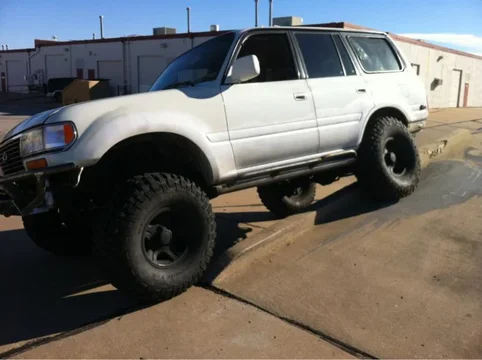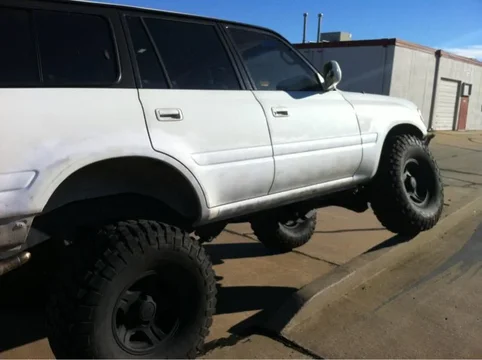TheBigBoy said:
chose the correct shock - easy.
These will be built to spec.
My original plan was to disconnect sways and shocks, lift entire vehicle, check for driveline bind at full droop, then measure. This would be extended dimension.
(Edited: due to the coil extension, they won't fall out at full droop. Can't say how much downforce is present, but they do remain in the coil bucket)
Then, pull coils and stuff the axle, parallel to the frame, and measure. This being compressed.
To check the overall usable within the confines of the links, stuff each wheel independently, allowing the other side to remain extended, measure both sides. Repeat at all 4 wheels.
Take the lesser of all dimensions, subtract a 1/4" for bumps-straps (if necessary) and order/valve according to the shock stroke.
Pretty much, same as your process, setting bumps at whatever time (more or less, don't disagree with this being the ideal time to limit and recheck).
The variable that I added was checking to see if a disconnected front sway bar, attached to the frame for off road, would substantially limit droop. If so, deal with the sway and not limit before it hits. I don't want to buy another driveshaft.
I've lost the ability to borrow lift time, though, and after a conversation with Glenn, that's the reason it was determined to calculate compressed only, with coils in, with forklift. Just don't think the numbers matched what he's familiar with (and according to all other data, they don't) and reason I'm now back to square one.
The articulated variances were important to me, because rubbing on the inside of the well should be restricted, in my opinion, and due to the type of usage intended. I'll never have the entire rear axle off the ground at once, so articulated dimensions made the most sense.
Quick run through confirms the rear dimension, though and highlights the obvious flaws in the initial forklift test.

At this point, there's a 1/4" between the inner tire and the inner wheel well, BUT the front tire is coming off the ground, due to the limited range of the shock. Center of eye to mounting surface is only 3/4" less than what resulted during the forklift test.
For the front, can't get near the same compression as with the forklift.


That's all she'll go before the rear tire lifts off the ground.
Obviously none of this has any bearing on anything but highlighting that compressed dimensions aren't all that's necessary. There's a balance to be found during stuffed, drooped, and articulated.......just not sure if that's more complex than the platform dictates.





